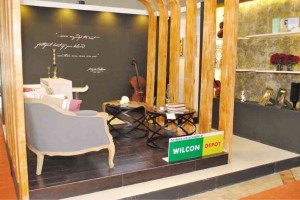
Filipino ingenuity could well be our young designers’ ticket for further recognition in the international scene.
But these young talents are in need of government support, a deeper understanding of design through analytical approach and cultural perspective, and an attitude suitable to a global setting to be globally competent.
This was the collective outlook of panelists at a design symposium entitled “On Solid Ground: Philippine Design Education for the 21st Century” during the 18th Philippine World Building and Construction Exposition (Worldbex) last March 13-17 at the World Trade Center in Pasay City.
Design at infancy stage
Seasoned architect Ed Calma, known for creating College of Saint Benilde’s (CSB) School of Design and Arts building, told the Inquirer that the country is still in its infancy when asked of his assessment as far as design training and education is concerned.
Calma noted that the Philippines lags far behind First World counterparts due to limited resources and tools available.
“The only way we can assess our education is to compare it abroad and see what they do,” said Calma, a graduate of Pratt Institute and Columbia University School of Architecture in New York.
Industrial designer Joey Yupangco of Joey Yupangco + Associati lamented the lack of support from the government for new design developments.
Yupangco, also dean of the School of Design and Arts at De La Salle-CSB, said that quicker government response and stronger support system, especially from the Commission on Higher Education, can prepare homegrown designers globally.
To offset these limitations, Yupangco said that we [should] “work on our strength” and “make a big focus on abilities.” Some schools such as CSB he said are taking in foreign-educated designers to let them impart their experience and expertise to students.
A young Filipino industrial designer from Domus Academy, a design and fashion school in Italy, noted how Filipino culture plays a part in lost opportunities for young designers.
Joseph Gonzalez, also a CSB graduate, emphasized how new graduates take the back seat, rarely coming forward to defend or even talk about their designs.
“Filipinos are naturally shy,” he said, “and they commonly miss out on chances of getting recognized. Getting empowered through culture exposure and education on how to market their designs can help them do better.”
Another way of doing it is through collaboration, as suggested by architect Tobias Guggenheimer, dean of the School of Fashion and the Arts (SoFA) in Makati City.
Guggenheimer focused on the power of bringing together local and foreign education into work, as what they have been doing in SoFA, so students would have the edge to go globally.
“It’s just a question of giving them a deeper level of confidence and higher level of competence, and with that they can compete or contribute anywhere in the world,” he said.
In demand
In a more optimistic view, Worldbex Services International marketing director Jon Richmond Ang, told the Inquirer that Filipino designers’ talent is well in demand in other countries.
“I have seen a great response to Filipino design abroad. I had a trip once to New York wherein the Philippine Embassy showcased their show windows with Filipino creations. Right at the heart of 5th Avenue, passersby would stop and just be in awe with the indigenous materials used by these Filipino designers.”
Ang said expositions like Worldbex become perfect avenues for students in showcasing their talents for prospective clients. “Worldbex and other expositions welcome young talents and expose them to the right market.”
As part of the trade show, the annual design competition “Obra Maestra,” in partnership with Wilcon Depot, allows budding interior designers to showcase their skills.
This year’s theme, “Trancendence: Classical Accents in Contemporary Settings,” had nine participating schools which started conceptualization as early as February.
‘Paradoxical living condition’
Drawing inspiration from the rising trend of condo-living, the UP team who bested all others, pieced together a representation of what they called “paradoxical living condition” by mixing the old and new in a living room divided into areas for guests, reading and work.
“With this condition as an inspiration, we thought of two seemingly contradictory styles, the baroque being ornate and lavishly decorated, and the industrial style being raw and functional, and brought them together,” Miguel Francis Mariano told the Inquirer in an e-mail interview.
“The result was our concept entitled ‘Paradox,’ referring to seemingly contradictory elements that actually make sense together,” Mariano added. This design cost them a little over P200,000, he said.
UST designers who emerged as the first runner-up played up the fusion of the modern and the classic by bringing some elements of the past into the present as has been demonstrated in a gallery-inspired living area composed of monochrome pieces.
Second-runner up Eulogio “Amang” Rodriguez Institute of Science and Technology showcased a contemporary classical bedroom.
Other participating schools are Philippine School of Interior Design (toilet and bath), Philippine Women’s University (bedroom), University of the East-CFAD (toilet and bath), Polytechnic University of the Philippines (dining room), St. Scholastica (living room) and Mapua Institute of Technology (bedroom).